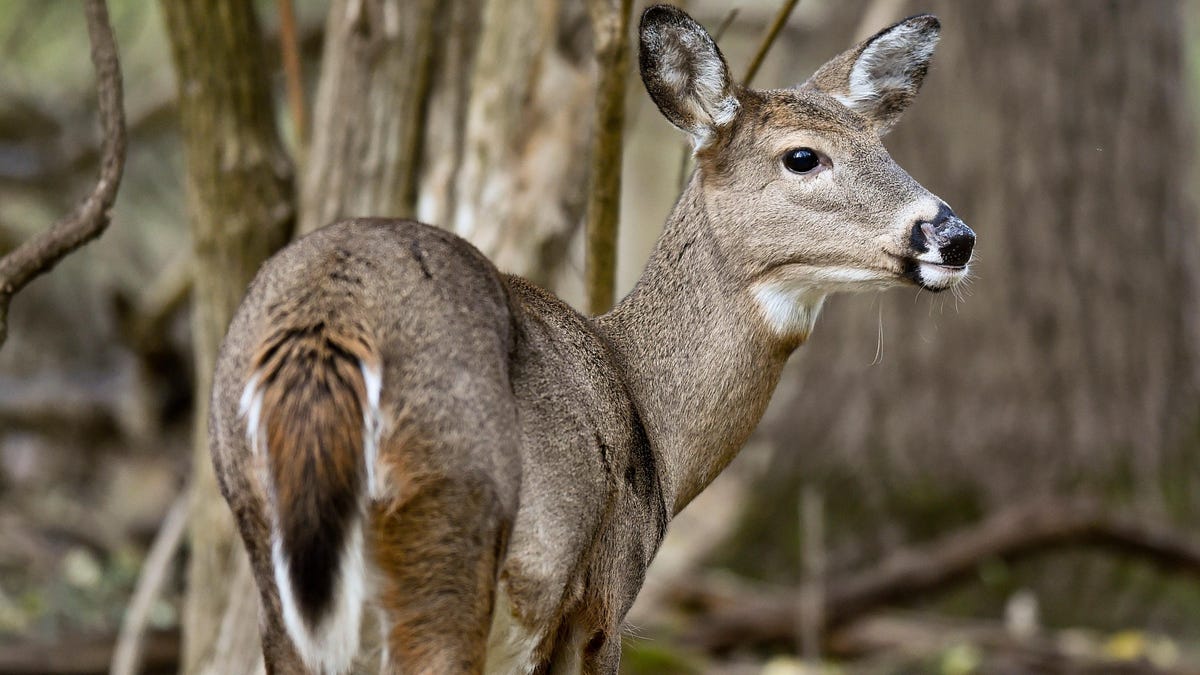Earlier this year, a team of scientists garnered a wave of media attention with their provocative report: They claimed to have found two cases of a rare but fatal prion disease in hunters that could have plausibly been caused by them eating contaminated deer meat—a frightening reminder of the mad cow crisis over 30 years ago. But many outside experts don’t agree, and recent research has disputed that such a thing is even possible—at least for now.
The report was presented by researchers at the University of Texas Health Science Center at San Antonio in early April, at the annual conference of the American Academy of Neurology.
Time to fear the deer?
They had come across a case of a 72-year-old man who died in 2022 of Creutzfeldt-Jakob disease, or CJD, the most common but still very rare prion disease in humans. According to the report, the man had a friend at the same hunting lodge who had also recently died of CJD. And both men had reportedly eaten venison from the same population of deer—a population in which cases of chronic wasting disease (CWD) have previously been detected.
CJD, CWD and other prion diseases are caused by a misfolded version of the harmless prion protein. When a bad prion comes into contact with its normal self, it somehow forces it to turn into another misfolded copy. Over time, this zombie-like accumulation of diseased prions destroys the brain from the inside out, though it can take years to decades before symptoms like dementia show. But once they do, death soon follows.
Mammals in general are susceptible to prion disease, which can happen sporadically or can be caused by genetic mutations that make the appearance of these bad prions almost inevitable. But sometimes, prions can also be transmitted from one individual to another (infamously, the prion disease kuru was spread through cannibalism), or even between two different species of animal. In the 1980s, we learned that cows could develop bovine spongiform encephalopathy, or mad cow disease, from prions—which may have been caught from prion-infected sheep. A few years later, we learned that people could catch a variant form of CJD from eating mad cows.
The mad cow epidemic and resulting vCJD (the variant form) outbreaks were ultimately contained by improved food safety practices. But CWD in deer, first discovered in the 1960s, has only become a larger problem over time, as the disease has spread farther and wider across deer populations in North America. And the UT Health San Antonio researchers argued that a similar chain of events may have happened with their two hunters.
“The patient’s history, including a similar case in his social group, suggests a possible novel animal-to-human transmission of CWD,” they wrote. They also called for more research to be done to investigate this possibility.
The team did explicitly note that this potential prion connection between deer and humans was unproven (as did Gizmodo’s coverage at the time), but other media outlets weren’t so cautious with their words. The UK Daily Mail’s headline, for instance, was: “Two hunters ‘become first Americans to die from ZOMBIE DEER disease’ after eating infected venison.”
‘Incredibly Irresponsible’
Leaving aside the tabloids, many outside scientists and organizations still thought that the researchers went too far with their speculation, given the limited information available.
In response to the report, the conservation group Tennessee Wildlife Federation stated that, “attempting to link sporadic cases of CJD in humans to CWD with no documentation or evidence is incredibly irresponsible.” The Centers for Disease Control and Prevention was more generous, with CDC epidemiologist Ryan Maddox telling USA Today in late April that it was important to assess the potential risk of CWD transmission to humans, but also that the CDC had looked into the cases and ruled out a link to CWD.
Many of the details in these cases, including the older ages of the victims, “were all consistent with what we normally see in classic, sporadic CJD not attributed to CWD,” Maddox said. By contrast, vCJD cases caused by infected beef tend to occur in much younger people.
Gizmodo reached out to experts at Case Western University’s National Prion Disease Pathology Surveillance Center regarding the report, who were similarly skeptical, even as they stressed the importance of tracking CWD in deer.
“The NPDPSC has not found any evidence of chronic wasting disease transmitting to humans; however, continued surveillance is warranted given the increasing spread of the disease,” Brian Appleby, director of the center, told Gizmodo in an email.
Some studies in animals, including non-human primates, have found evidence that chronic wasting disease prions could potentially infect and sicken humans, but other research hasn’t. A new study on this very topic was published just last month, led by researchers from the U.S. National Institute of Allergy and Infectious Diseases, and it too was reassuring.
Nothing to find
The team, led by NIAID researcher Cathryn Haigh, had previously learned how to create lab-grown organoids—miniaturized versions of our organs— of our brain that can be reliably infected with human CJD prions. These organoids, aside from saving time and animal lives, should also more accurately model how prions make us sick, and might even help us discover or test out drugs that can stop them.
In this new research, Haigh’s team once again easily infected their organoids with CJD, which served as their control comparison. They also soaked other organoids in CWD prions taken from several species of deer and elk for a week straight, and observed them for up to six months.
“The short story is: we couldn’t see anything,” Haigh, chief of the Prion Cell Biology Unit at NIAID’s Laboratory of Neurological Infections and Immunity, told Gizmodo.
Haigh doesn’t rule out the chances of CWD transmission to humans entirely. It’s not impossible for a strain of CWD to emerge that could someday jump the species barrier, for instance. And Haigh’s team is continuing to study the topic, with one upcoming study set to test whether CWD prions can infect human gut tissue, likely an crucial step toward brain infection from eating tainted venison. But right now, judging from both their research and others, she’s not too worried. “We do think that, currently, the risk of CWD spreading to humans is low,” she said.
As for the recent report, Haigh minces no words about her opinion on it.
“Personally, I thought it was fear-mongering. I don’t think they presented anything that would make people in the field worried,” she said.
Gizmodo has reached out to several of the authors of the CWD case report, both leading up to its release in April and recently, who have not directly responded. Monica Taylor, senior director of Public & Media Relations at UT Health San Antonio, did respond to our latest inquiry. Taylor noted, correctly, that the team’s case report was not a peer-reviewed study, but a poster presentation at a conference.
“The conclusion from that presentation was there remain no proven cases of transmission to date,” Taylor added.
So yes, if you’re a venison lover, there’s no immediate need to cut down on your habit. Just make sure to properly cook it. You might never catch prions from deer, but any kind of undercooked meat is liable to have germs or parasites that can still make you sick, including game meat.

Rachel Carter is a health and wellness expert dedicated to helping readers lead healthier lives. With a background in nutrition, she offers evidence-based advice on fitness, nutrition, and mental well-being.







